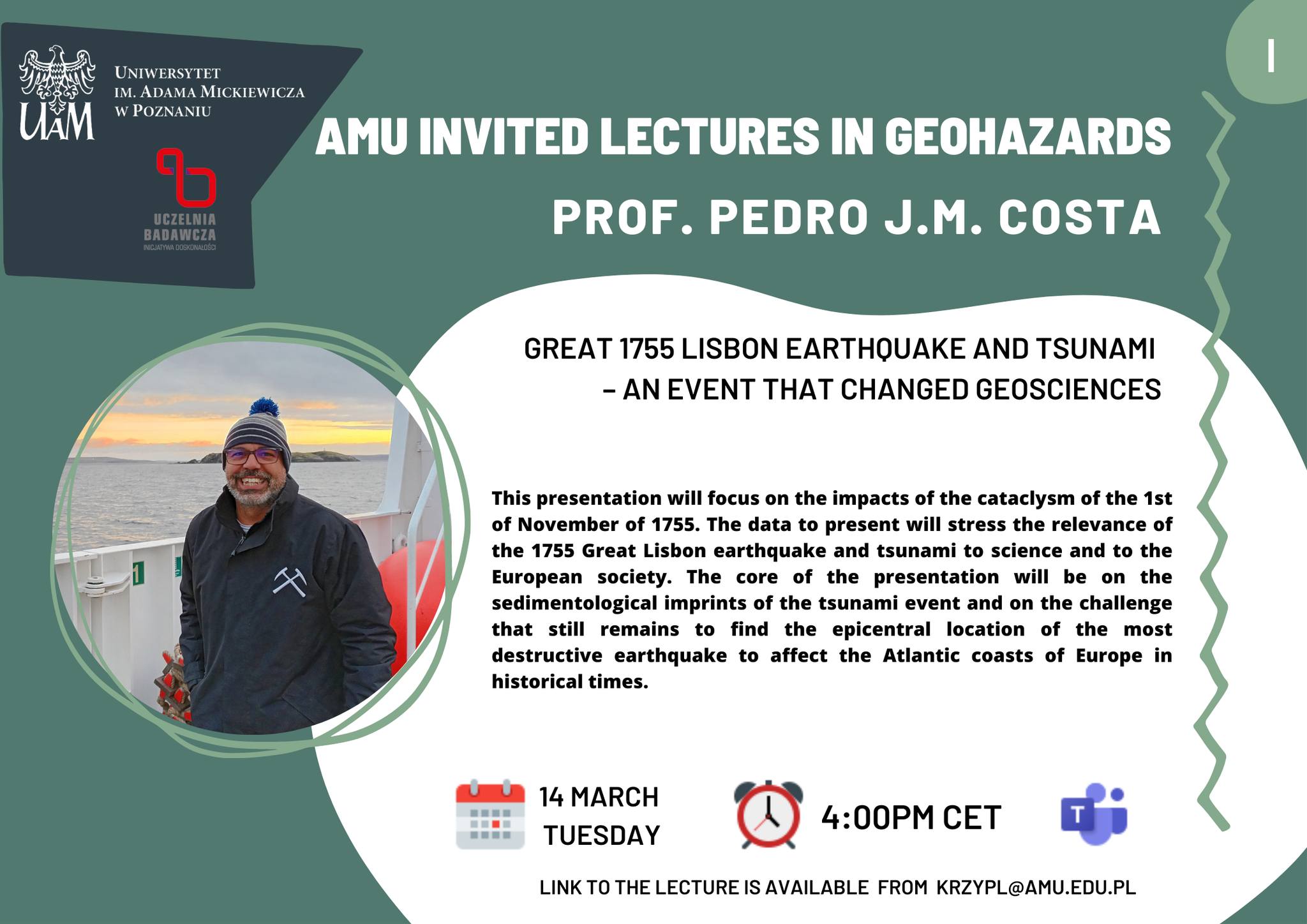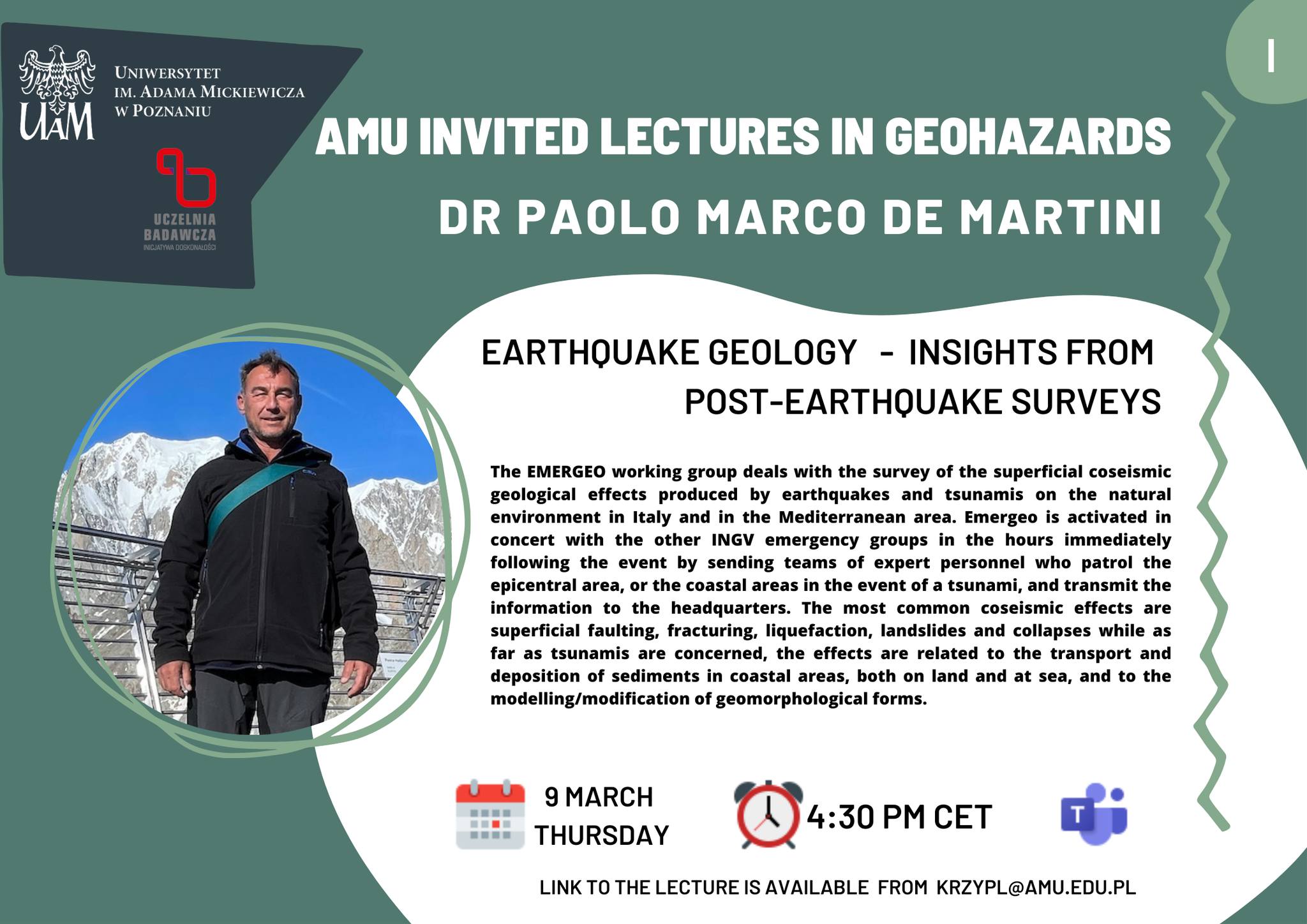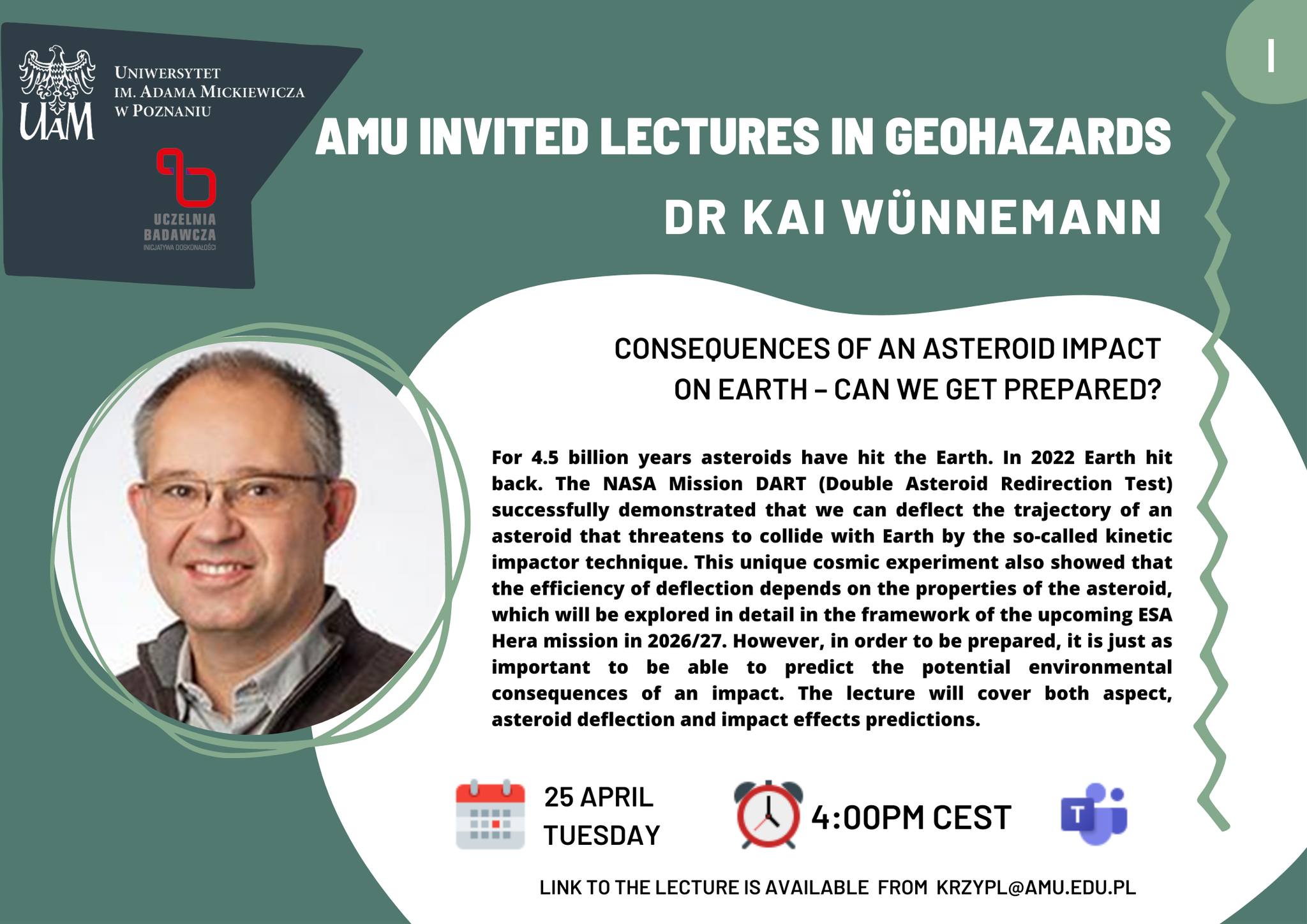Geohazards I
The application concerns a series of 4 lectures delivered by world-leading Earth scientists dealing with geohazards from Germany, Portugal, Italy, and France. The main topic of this series of lectures will be the application of the most advanced geological techniques to natural hazard risk assessments. The invited lecturers use various methodologies in their research ranging from modeling to field-based studies, and have extensive experience investigating different kinds of geohazards, including tsunamis, earthquakes, volcanic eruptions, and impact cratering. Consequently, the lectures will provide a broad perspective on the leading topic of the series, which is also one of the most up-to-date research topics in Earth sciences. Undoubtedly, our university’s academic community and the broad international audience will benefit immensely from listening to the lectures of such distinguished scientists on such a crucial topic and from the possibility of discussing with them during panel discussions.
Pedro J.M. Costa (Universidade de Coimbra, Portugal)

Preliminary lecture title: Great 1755 Lisbon earthquake and tsunami – a lesson for the future
Professor Costa is an author of 56 papers (H=18) and focuses mainly on studying coastal processes using geomorphological and sedimentological methods coupled with physical and numerical modeling to understand morphological and sediment changes caused by natural hazards (e.g., tsunamis and storms) and their impacts on the environment. He also works on establishing provenance relationships in siliciclastic sediments, aspects of aeolian sediment transport, Antarctic soils, Mars geology, and geoarchaeological studies. He serves on the advisory board of the Sedimentary Geology journal and recently plays a guest editor of major special issues (e.g., in 2020 in Sedimentology). His works were often ranked among the top downloaded results from specific journals (e.g., Geomorphology, Sedimentary Geology). He is involved in many international collaboration projects.
Paolo Marco De Martini (Istituto Nazionale di Geofisica e Vulcanologia (INGV), Section of Seismology and Tectonophysics, Roma, Italy)

Preliminary lecture title: Earthquake geology – insights from post-earthquake surveys
Professor De Martini is an author of 86 research papers (H=26) and has much expertise in earthquake geology, paleoseismology, tectonics, and tsunami geology. He employed various methods, including field-based surveys (quick post-earthquake surveys), seismological observations, sedimentology, geodesy, and sediment dating. He is mainly interested in the Quaternary history of the Mediterranean Region. He works on a meeting point of pure basic science and applied science in service of earthquake hazard reduction.
Raphaël Paris (Université Clermont Auvergne, CNRS, IRD, OPGC, Laboratoire Magmas et Volcans, Clermont-Ferrand, France)

Preliminary lecture title: Volcanic-generated tsunami – the highest tsunamis on Earth?
Professor Paris is an author of 84 papers (H=31) published in the best geoscientific journals (including Nature). His primary interests are volcanic tsunamis, tsunami deposits, ocean island evolution, flank instability, and coastal geomorphology. His expertise includes field surveys, coastal mapping, photogrammetry, and extensive novel applications of X-ray computed tomography. Plinius Medal of the European Geoscientific Union was awarded him.
Kai Wünnemann (Museum für Naturkunde, Berlin, Germany)

Preliminary lecture title: Consequences of an asteroid impact on Earth – can we get prepared?
Professor Wünnemann is an author of 85 papers (H=29) focused mainly on asteroid/ meteorite impact modeling and landslides. His main research areas include investigating impact processes in the solar system with computer simulations, improved understanding of the highly dynamic processes during the collision of extraterrestrial bodies with planetary surfaces, and focusing on crater formation and collapse. He is also investigating ejecta ballistics and ejecta plume, impact melt and shock metamorphism, oceanic impacts, and the construction of tsunamis and gravitational mass movements, e.g., marine landslides in coastal regions caused by earthquakes or volcanic eruptions. His works apply computer models to study the interaction of the sliding body with water and wave formation, wave propagation in the ocean, and the contact of tsunamis with the coast. This kind of study help to improve the forecast and quantification of the impacts and risks of landslides in coastal regions.
Recently, he served as Deputy head of the Science Programme "Evolution and Geoprocesses" and head of the section "Impact and Meteorite Research" at MfN.